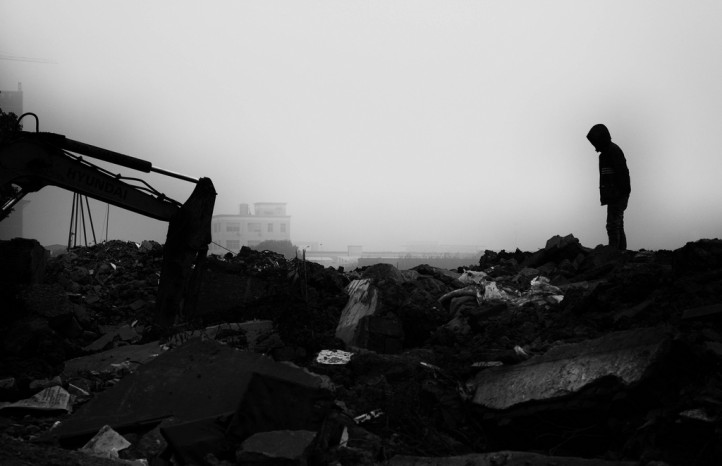by NOEL ORTEGA
 Thomas Piketty’s “Capital” is an extremely important contribution to the study of economics and inequality over the last few centuries. But because it fails to address the real limits on growth—namely our ecological crisis—it can’t be a roadmap for the next. PHOTO/Dai Luo/Flickr
Thomas Piketty’s “Capital” is an extremely important contribution to the study of economics and inequality over the last few centuries. But because it fails to address the real limits on growth—namely our ecological crisis—it can’t be a roadmap for the next. PHOTO/Dai Luo/Flickr
The crisis of capitalism isn’t just about the gap between rich and poor. It’s about the gap between what’s demanded by our planet and what’s demanded by our economy.
By now, it’s no secret that French economist Thomas Piketty is one of the world’s leading experts on inequality. His exhaustive, improbably popular opus of economic history—the 700-page Capital in the Twenty-First Century—sat atop the New York Times bestseller list for weeks. Some have called it the most important study of inequality in over 50 years.
Piketty is hardly the first scholar to tackle the linkage of capitalism with inequality. What sets him apart is his relentlessly empirical approach to the subject and his access to never before used data—tax and estate records—that elegantly demonstrates the growing trends of income and wealth inequality. The database he has compiled spans 300 years in 20 different countries.
Exactingly empirical and deeply multidisciplinary, Capital is an extremely important contribution to the study of economics and inequality over the last few centuries. But because it fails to address the real limits on growth—namely our ecological crisis—it can’t be a roadmap for the next.
Inequality and Growth
One of the main culprits of inequality, according to Piketty (and Marx before him), is that investing large amounts of capital is more lucrative than investing large amounts of labor. Returns on capital can be thought of as the payments that go to a small fraction of the population—the investor class—simply for having capital.
In essence, the investor class makes money from money, without contributing to the “real economy.” Piketty demonstrates that after adjusting for inflation, the average global rate of return on capital has been steady, at about 5 percent for the last 300 years (with a few exceptions, such as the World War II years).
The rate of economic growth, on the other hand, has shown a different trend. Before the Industrial Revolution, and for most of our human history, economic growth was about 0.1 percent per year. But during and after the rapid industrialization of the global north, growth increased to a then-staggering 1.5 percent in Western Europe and the United States. By the 1950s and 1970s, growth rates began to accelerate in the rest of the world. While the United States hovered just below 2 percent, Africa’s growth rates caught up with America’s, while rates in Europe and Asia reached upwards of 4 percent.
But as Marx observed in the 19th century, economic growth did little to reduce inequality. In fact, as Piketty demonstrates, wealth has grown ever more concentrated in the hands of the few, even as the pie has gotten bigger. Piketty developed a simple formula to illustrate how wealth gets concentrated: when the average rate of return on capital (r) is greater than the rate of economic growth (g)—in mathematical terms, when r > g.
Through the 19th and early 20th centuries, according to Piketty, the rate of return on capital exceeded that of growth, and inequality blossomed in the industrialized world. But in the 1950s, this trend began to shift—not because of redistributive economic policies, but rather as a consequence of historical calamities in the preceding decades. During this time, aggressive social, economic, and tax policies were ushered in by devastation and destruction.
Foreign Policy in Focus for more
via Alternatives International Journal for more
